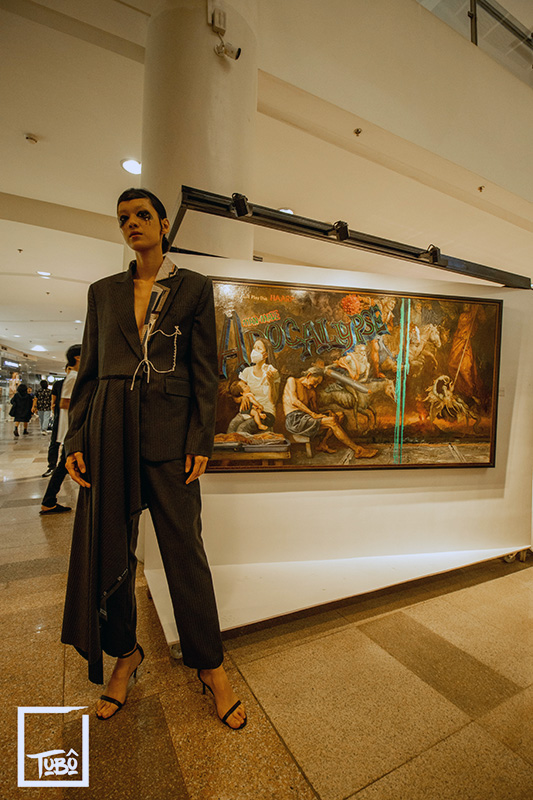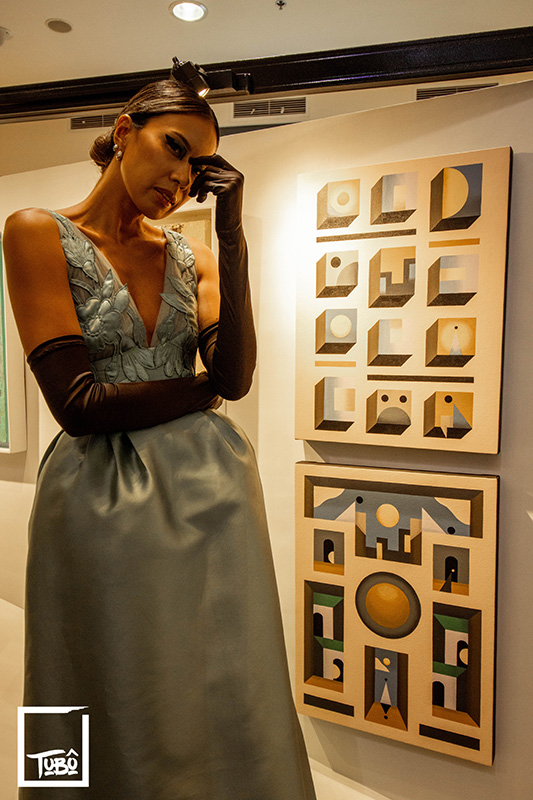
Converging Art and Fashion: A Short Dialogue with Cebu Top Designers Edwin Ao and Protacio
by Paula Abelgas
“Art is art. Fashion is fashion,” says Karl Lagerfeld, a fashion designer and photographer, notably known as the creative power behind Chanel’s modern revival.
Spanning across the ages, the long-standing illicit affair of fashion and art has collected a tapestry of diverse perspectives, sparking an unending debate on their relationship. The main disparity between both creative realms relies on longevity: contrary to the timeliness and boundlessness of art, fashion remains ever-changing and controlled by trends.
But as this collaborative generation continues to bend the boundaries of both disciplines, is the notion “Art is art. Fashion is fashion.” still valid?
If we ask Edwin Ao, a renowned fashion designer and artist based in Cebu, he believes that art and fashion are “two opposing forces but in the same direction.” Although they have different traits and adhere to different customs, there is a parallelism that binds them together, which according to him is how both only need “inner approval” in the creative process.
“With art, you only need inner approval. So if we translate that into fashion or into a dress, you don’t need anybody’s approval. You know that because you believe in that design,” he stated.
Indeed, art plays a role in exploring one’s creativity and individuality manifested through wearable pieces. Edwin Ao precisely channels his artistic vision by immersing himself in pictures and portraits from the ’50s and ’60s, art books, and paintings. With these references in mind, he transforms his interpretations into masterpieces, showcasing his artistic talent and ingenuity.

Edwin Ao’s interpretation of The Messengers of Geo Engineering by Galicano (2023)
In the discourse of getting that inner approval in making a piece, Protacio, one of Cebu’s top bridal designers, also underlines the importance of embracing one’s artistic strengths. His visions are usually molded by several works of art, but he also gains inspiration from emotions, translating them into fashion pieces.
In his case, he intertwines the elegance of neoclassical art as a signature feature of his works. Moreover, he commits to sticking to what he has always believed in without the intention of getting the spotlight. “I don’t do pasiklaban,” he puts it best, in which he does what he can and lets the pieces make the noise.
Truly, Protacio makes his mark in the fashion industry, incorporating the art of embroidery in his pieces. According to him, it is his way of reviving this dying craft, letting people of this generation be aware and appreciative of its beauty.

Protacio’s take on Reasons Unknown by Pepe Delfin (2023)
Now that we see how art influences the fashionable perspectives of these designers, what role does it play in the minds of the wearers?
Edwin Ao agrees that the very essence of art lies in one’s courage to be different and weave a sense of individuality into their clothing choices. When custom-making a piece, he prioritizes understanding the client’s personality and style rather than imposing his own creative pursuits. As a designer, he ensures that the garment can be utilized by the wearer as a powerful medium for self-expression.
On the other hand, Protacio takes a slightly different tack. While he does not alter his style to fit any societal trends, he actively engages with his clients, working alongside them to ensure their satisfaction before putting pencil to paper. As he does all the work, he only asks for one thing from his clients—confidence.
In the end, these local designers prove that fashion is one of art’s many disciplines. Art instills the courage of self-discovery and showcases our personalities through clothing pieces that reflect our authenticity. By effortlessly combining colors, embracing preferred patterns, and experimenting with textures, a new fashion statement that challenges comfort zones and traditional notions is born.
After all, what really is the point of putting a gap between fashion and art if they liberate self-expression?
